 |
Text - Summer Solstice Journeys - a series of photographic journeys - © Lloyd Godman
Compass
of Time Watch of Space
By its very nature, photography is not only a medium of light, but
one of time and space. Specific time and place are almost impossible
to obliterate when an exposure is made, and the believability of
a photograph is inextricably linked to this fact. A photograph is
always about something, and that something was in front of the camera
at the time of the camera exposure. The intensity of this "stalling"
of time in a photograph can be such that the observation of some
images reveal a power, a potency, as if a re-exposure could empower
the image, like a time machine, a Tardas that stands external to
these forces, and bring that immortalized time and space into mobilization
for the viewer once more; or perhaps reverse, transporting us back
to a past era.
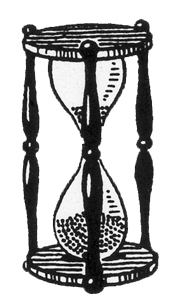
Historically
the capture of explicit time and space have been seen as photography's
greatest strength. At the time of its discovery, no other medium
had immobilized time and space in quite the same manner that photography
could, and it is this fundamental intrinsic quality, the accuracy
of recording the present for the future, that has held the medium
apart from other graphic arts. From the genesis of the medium, many
approaches have been applied to the time/space specificity of photography,
from the documentary genre, which relies wholly on this fact, through
to directed images which often exploit a deceit of these truths
through the recreation and fabrication of earlier or imagined times
and spaces.
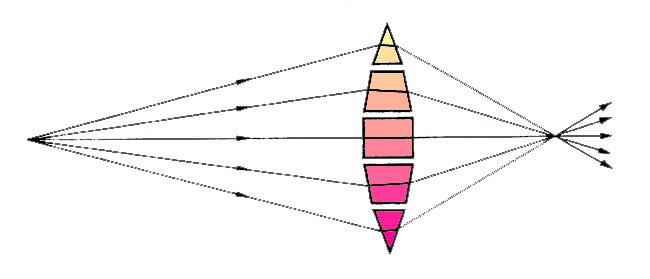 |
And
in more recent times digital manipulation has comprehensively subverted
the reality of the photographic. "Enhancement" of the photo image
to a new crossroad. Visual truth no longer exists, it can be argued
that the species is dead; a reverberation of Delacroix's statement,
"From today painting is dead", echoes in every photolab. Photoshop
is the collodian of the late 20th century, the painters days are
done.
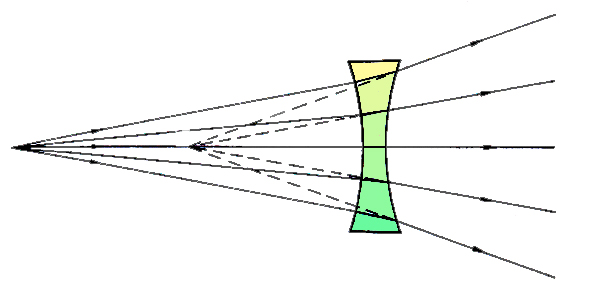
Although
it can be argued that the truths of photography are indeed deceptions,
all photography (excluding some digital) is in fact anchored to
the elemental verity of time and space, and it is our perception
that relegates it to a certain kind of believable reality. For instance
the scene in front of the camera may exist only as modulating light
from a mixture of sources projected onto a screen or film, or as
an abstract variegation of light and shadow on the photographic
paper, but the very combination of light that makes the final image
also existed in time and space, and through a variety of separate
circumstances the phenomenon is eventually altered or extinguished,
to remain how ever be it in the form of the photographic image.
Without light darkness prevails
. 
Even the most manipulated of photographs need light. Light, time
and space are essential to complete the exposure, and this amalgam
in any combination is transitory. So inextricable is the nexus that
it seems impossible to question if light can manifest itself without
time and space in a type of E=MC2 latent phenomenon? Though
the prospect might be intriguing, this aspect is beyond our perception,
an idea, emotion or any nonphysical element, no matter how intense,
focused or refined is not enough to stimulate the photographic emulsion
into producing an image. Try as we might, there has to be some exposure
to a tangible form of radiation to stimulate the process.
Apart
from future seeking, and despite the subversion of its potency,
photography remains the perfect medium to explore our present time/space
relationships as a document for the future; it manifests as a facsimile,
a tracery on the page of where we are NOW or where we have been.
It can still be a visual legacy of people, places, events and time.
There are two distinct aspects to this: not only the obvious confirmation
of what was anterior to the camera lens at the time of the exposure,
but the photograph remains as another evidence, it implicates something
unseen, unrecorded, untraced.
While
it becomes a record of the conspicuous what and/or who that was
in-front of the lens, the photograph implicates the author by suggesting
s/he also was present - a voyeur, from the Old French "one who sees".
The photograph insinuates that the image is somehow from the author's
perspective, what s/he has seen, found or set up, something s/he
has found significant and worthy of recording. Someone had to commit
the image to film, to ascertain what the photograph would be of,
frame the image within the view finder, calculate the settings,
take the photograph, be the activator, be the witness. |
So,
from this in-severable association, the photograph is a signifier
of this fact, that the scene was a profound part of the photographer's
experience, enough so for them to dedicate the image to film and
freeze that particular time and space in the form of an image. Someone
had to engage in the photographic ritual however un/ostentatious
that may have been. The photograph is discreet evidence of the ritualistic
activities of the photographer from simple incognizant act to the
pre-planned activity visually explicit in the final image and undoubtedly,
the success of the photograph depends upon the ability of this witness
to pre-visualize how this inscribing of visual experience will translate
through the optical/mechanical/chemical process.
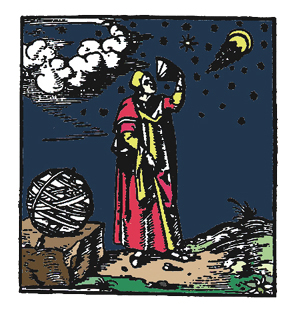
But
often there is a vital void between the intimate experience and
the photographer's translation, the picture is undoubtedly not worth
a thousand words. But even more often there is another inevitable
disparity, that between the experience, the translation and the
viewer's interpretation. For it is not only what the photographer
brings to the image, but what the viewer brings as well that will
determine the observer's explanation, and while the photographer
has control over her or his aspect, there is little more than assumptions
that can be made about the viewer's.
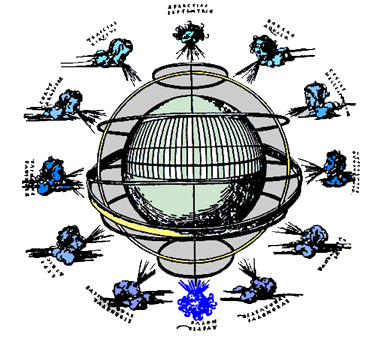
Years,
months, weeks, days, hours, minutes, seconds, metres. For convenience,
time and space are divided into logical, regular, linear intervals.
The measurement of time, space and direction is an exacting science
which has concerned Homo Sapiens for thousands of years, with each
generation trying to define and preserve these measures more than
the last. From the essentially of predetermining seasons prehistoric
cultures developed solar and lunar calendars. Magic started with
the light of the sun and a multitude of rituals grew as part of
the seasonal predictability cycle. The magic of the photographic
process and the inseparable relationship with light has encoded
its own rituals.
Inconclusive
are the arguments of philosophers and lexicographers in defining
time. Today various institutions have evolved to take extraordinary
care to ensure our measures remain consistent and are defined more
precisely than ever. Perhaps a minute or a metre is indeed longer
than it was last year. With the use of satellites, lasers and electronics
it has become possible to locate one's global position within a
few metres. Navigation is no longer an extraordinary feat, but a
conceptually presumed right. Knowing where we are and where we are
going has become a primary function of society today. |
Navigation
and the constructs of time and space is an intellectual facility
that allows for me to meet with you at a predetermined place and
time: the steps of the Parliament Building at 10.30 a.m. November,
10th 1991, or the top viewing platform of the Empire State Building
12 Midnight December 31th 2000. We can plot a course using a compass
and latitudinal and longitudinal lines to navigate the globe on
which we live. Map, compass and watch are the constructive
tools with which we plot our course through time and space and there
is little doubt of the value these measures have in our lives. Such
is the completeness of this invisible tracery of binding that not
only has the earth been bound with the physical barriers of civilization
but also with imaginary lines of navigation! Colonization is a physical
and metaphysical phenomena.
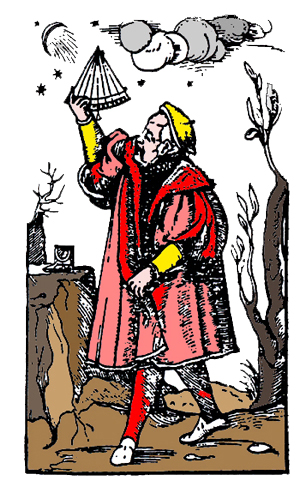
The
pressure of modern life means we must conform more and more to this
inter-braided matrix of imaginary lines that bring a sense of order
to the chaos of time and space. The irony of the rigidity of abstracted
reality. The very measures that we have devised for ordering otherwise
confused space and time, an order intended to increase human freedom,
may restrict us by dictating a very narrow path through the appointments
and commitments that make up a sophisticated and modern life. One
questions the contradiction of these imaginary tools to measure
time and space as a means to find our way might have become so binding
and restrictive that they created the circumstances where we have
lost our way. Such measures or human inventions are arbitrary, and
thus 'unreal', yet at the same time we feel them to be very 'real'
parts of our experience.

These measures are of course both real and unreal: real in that
space and time are barriers of a certain physical nature that can
divide or connect us; unreal in that they do not exist in exact
terms for the measurements and commitments that make up modern life
are also bound to our natural senses of sight, sound, touch and
smell, which present a different perception of time and space. Without
the devices of measurement, our intuitive estimation and attitudes
to exploring space and time can be entirely different than our relationship
with exact measure, which is on an intellectual level and relies
on device. The distance between our estimation and precise measured
time can become discordant to the point where we miss the proverbial
boat: an essential engagement.
|
In
a totally measured society have we lost an essential sensitive sense,
lost the affirmation of archetypal rhythms that shaped stone and
flesh, lost a consonance to this environment that is the 'third
stone from the sun'? Perhaps. But despite the constructs of
measure we can still hear echoes, echoes of the ghost bird. (To
the Maori the Hukioi was a mythological phantom bird that was only
ever heard and never seen in the small islands off Stewart Island
and now whenever I experience things that move move me in this manner
I think of the Hukioi.
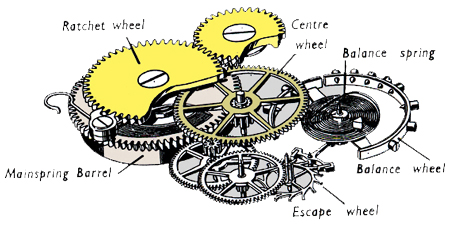
There
is still the penetrating cry of the Hukioi, the deafening echoes
in the stillness of the valleys of incertitude that reverberates
in the hollows of our lost senses, but because we can not decipher
these sounds it is usually easier to forget and return to the measures
of society than become perplexed in an effort to recollect or rediscover.
But we do experience whispers, internal whispers however soft they
may be, and there are other means to explore the earth using different
concepts of time and space if we care to look.
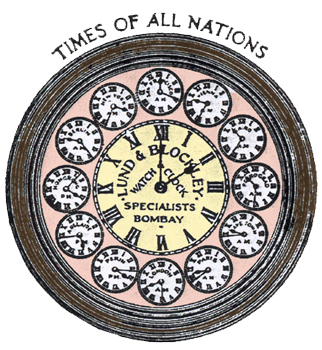
The
joy of a reduced commitment is an experience most people have during
holidays and weekends when the timetable is often less formalised
and reliant on time/space frames. There is a sigh of relief, a shrug
of the shoulders at not having to conform. Peter Fonda and Dennis
Hopper in 'Easy Rider', discarded their watches and just rode in
an attempt to escape the restrictions of society and the of measure
and time. Is it not a feeling we have all had at some point in our
life!
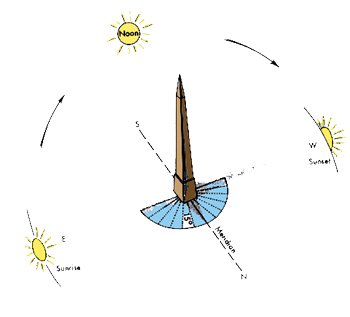
Without
doubt, to walk through space and time with no restrictions for an
indefinite period, presents a different impression than to move
through measured space in measured time. We actually experience
time and space in this way, with both passing at irregular intervals
rather than the regimented increments we have designed. On an intuitive
level, not only can one hour seem longer than the next, or a km
shorter than another, but there is the added sensation of density,
with one hour more intense than another or a km more fascinating
than the one before. Is it not the regular measurements that bring
us back to a standard? The glance at a watch, a sign stating the
km to a certain point - the constructs of conception and device
. 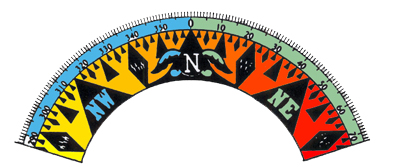
An
animal or child's perception of time and space for instance is different
to our conditioned and educated experience. Innocence of these constructs
does not leave a vacuous comprehension, for there are of course
natural clocks: in built biological clocks that regulate birth,
growth, aging and death; universal external clocks that run on solar
and lunar sequence; clocks that operate on light, the essential
element of vision and photography; switching devices that control
matter, open and close organic structures, modulate biotic pigmentation,
stimulate growth and facilitate fertilization.
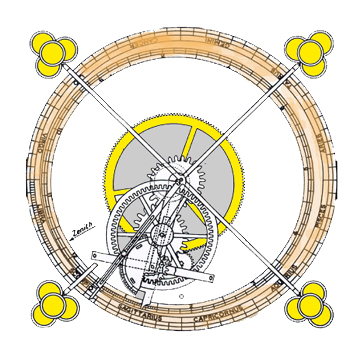
From an intuitive human response, the unpopulated continuum of an
irregular coastline, the stretches of fine sands with the haphazard
interspaced projecting solidness of rock and the ever elusive mutating
line between ocean and terra firma, becomes difficult to divide
into an exact imaginary matrix of time and space. The vista expands
with apparent simplicity, of the three elements of sky, water, earth;
it is "environment" as it used to be, uncolonized. Contained within
the arcane, in a spontaneous instant, locations like this become
biotic, and our composure of the accurate measurement of space and
time can easily dissolve into an erroneous criterion based on instinct.
For me it becomes a sensory symphony of sights, sounds and smell.
Even touch is heightened by the feel of water, rock, air and sand.
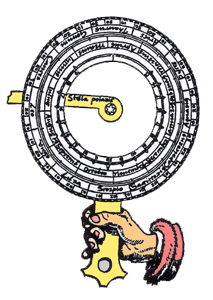
The
place I live is just such a beach. It is a place where land meets
ocean and sky affronts each. White sands interspace enchantingly
shaped rocks while gripping masses of slithering kelp move in rhythm
to the ocean's surf and tidal surge. Even though obscured among
a cloak of flora, the dark reaches of crevice and cave are a factor
in the ambience of the transcendental experience of this location
, unseen but still experienced. It is a magic landscape where legends
have been born in an age before, a landscape where impending legends
still lie concealed for those who search in the future, a landscape
where history or fate appears to have been empathetic to the biotic.
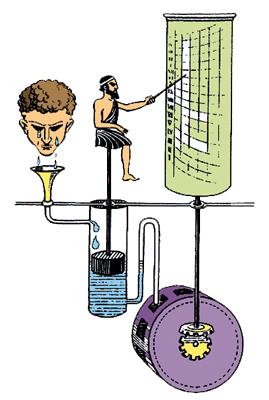
From
this beach, Brighton near Dunedin New Zealand the profile of Green
island lies a short distance out to sea. In the early morning this
island reads visually as a triangular shape floating upon a sea
of liquid silver and gold as the sun rises behind it in the east
and rides an ascending arch higher into a brightening sky. Almost
levitating on the water, the black basalt weight of the island floats
with ease in the warming light on the ever-moving ocean. For 15
years I had driven past to make my appointments and been briefly
enchanted by this sight: a sight that alludes to a potential legend
- the shimmering expanse of ocean, the sparkling reflections on
long bending swells, the tactile abstract textures and the silhouettes
of wet sand water and rock. The magnetism was such, that I would
sometimes stop to watch this natural theater, or return at leisure
and walk the rocks and sand, often with a camera.
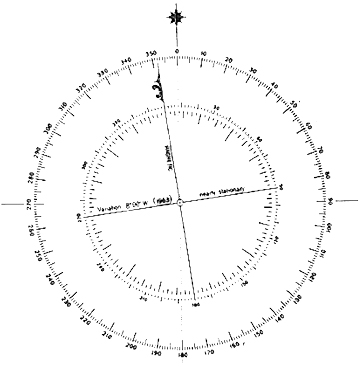
For
many years I continued to take photographs at this location, and
while I began to cultivate a series of images, that were good as
photographs they were not particularly interesting and appeared
to lack some imperative. To the ignorant, photographs of taken at
natural environments can appear unspectacular, irrelevant, too similar.
While we all relate to the environment in one way or another, fear
of cliché stops many photographers working with the subject,
stops many people acknowledging the awakening that it can be. For
it is so familiar that it is easy to believe that success lies in
the foreign. How often we think we know the familiar and seek the
exotic. Tourism survives from it. Although the facility for invention
is unlimited, living in one place for a number of years can produce
a conditioned perception of the space and time that one finds oneself
in, a constructed reality rather than an intuitive response, the
dilemma of living in one place so long that you can only see it
from a preconditioned singular perspective.
This
elemental experience of ocean, light and island demanded another
approach, a breaking of my preconditioning. Perhaps it evolved from
the symmetrical nature of the square format, but eventually a series
of photographs developed using a 6x6 frame tilted onto a diagonal
axis, allowing the equilateral triangular shape of the island to
sit in the triangulation of the frame corner. Initially the photographs
were taken at random during a morning walk along the beach, but
always with the apex of the island in the apex of the frame as a
reference point, a visual locator.
While
the visual information in the foreground varied remarkably with
each camera position, the island became a continuous reference or
a kind of trig, positioned centrally on the horizon of each photograph.
The sand would shift, would shimmer in a slightly different manner
as each wave's last energy was lost upon the beach and sucked into
the sand forever. Sometimes the concluding wash would ride across
the dried sand from the preceding high tide and settle meniscused
in elevation. The pulse of the ocean swells would wax and wane.
The seaweed would curve this way and that, would flail and recoil;
but the island remained like an ever present sentinel on the horizon.
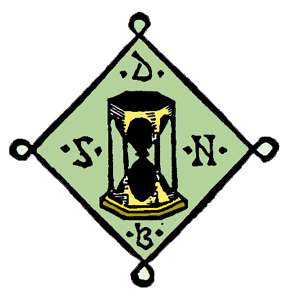
As
the works progressed, I became interested by the angle and direction
the island dictated I was to aim the camera if I was to retain the
apexial reference. I began to take a compass bearing from the axis
of the camera lens through the apex of the island as each photograph
was taken. Later, I also recorded the time and date locating each
photograph in the constructs of time and space. Although often taken
in the close proximity of a relatively small beach, minor movements
in time and space produced decidedly different visual results in
the final photographs. Even two photographs exposed from the same
location and less than a minute apart revealed changes in the wetness
of the sand and movement of tide and wave, emphasising the state
of flux between ocean and land.
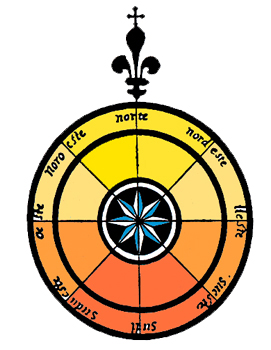
Compass
of Time Watch of Space III
I found
that from a certain angle, at a certain time, the sun can appear
to rise directly behind the island as a glowing golden orb and many
of the photographs have the sun and island directly in line through
the axis of the diagonal in the photograph. The tracking of the
sun in axis with the island, by traversing the beach to retain the
two in line as the sun moves on its predetermined arc, became a
means of visual navigation dictating an unknown path from which
I was challenged to find images to photograph, and I explored this
method for a while. A destiny of visual images was dictated in time
and space by an impartial force, a ritual within the ritual of making
photographs.
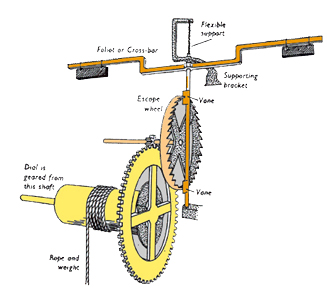
Gradually, a further challenge entered the work - to trace the axis
of the sun and the island aligning an axis between them, but on
the summer solstice from sunrise in a ritualistic photographic journey
as far as I could along the beach. The summer solstice is a special
time when the earth appears to halt, quiver and slowly move back
from where it came. It is when the light is longest, strongest and
highest from any given point. It is when a sojourn determined by
the ascending sun would be longest. A time when one could fully
engage the taking of photographs as a component of the solstice
and its much older associated historical rituals.
When
the time came to begin the work, I had my plans changed by another
force, and I actioned the work on the day before the official day,
as rain was predicted for the authentic day. This turned out a wise
move as the forecast was accurate; it was cloudy and rained the
next day. This would be the longest journey the sun would make and
I started before sunrise at 5.29 hrs ( 4-29 a.m. daylight saving
to be allowed for) and tracked a path for 4 hours always with differing
results. Often the path became difficult due to the irregular nature
of the rocky coastline against the line I needed to set. Sometimes
images abounded, within minutes and metres of each other there was
a rich symphony of material, while at other times there was little
variation. Even after the sun had risen so high it disappeared above
the camera frame its image could sometimes be referenced as a reflection
in a pool of water or wet sand in the foreground.
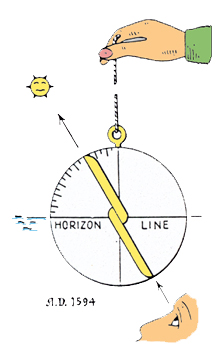
Eventually
the speed of the sun and the unsympathetic curve of the coastline,
which bent away unmanageably to the south meant the co-relationship
of the sun and the island axis was no longer possible bringing the
project to a halt for the time. The sun had now risen high in the
sky, the earth was hot, the tide had moved the ocean, and I thought
back to the words of Jimi Hendrix, '1993, a merman I will be', 'Moon
turn the tides gently, gently away'
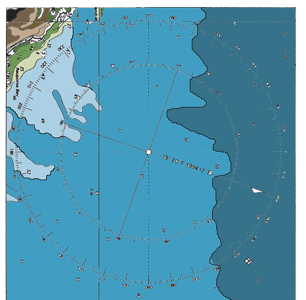
The final images
are located in space and time in a haphazard manner. A crude arrangment
of dates, times and compass bearings deviated still further by the
contours, interest centres and human error.

The final series
of photographs remain as both a document of the image anterior
to the camera, where the texture of sand, rock, kelp and water
cavort in a time honoured secret solstice ritual, and also as
a record of the journey, the ritual that I took that day, my personal
sojourn. I was central to this action, I was activator and witness,
this was a record of me as a centre of my universe, a centre of
a vortex, a facility we all have, to be the centre of our own
universe in our own space and time.

End
|
|
|
|